
Hyperthyroidism in cats
To function properly and harmoniously, the body needs to make hormones through its endocrine.
Hormones are small chemical molecules produced by a body acting on another body : they have a role of messenger and regulator of metabolism.
These messengers and regulators of metabolism, thyroid hormones include. There are 2 kinds : la thyroxine (T4) and triiodothyronine (T3).
Both are generated from iodine and tyrosine (an amino acid) by a small gland located in the neck, thyroid.
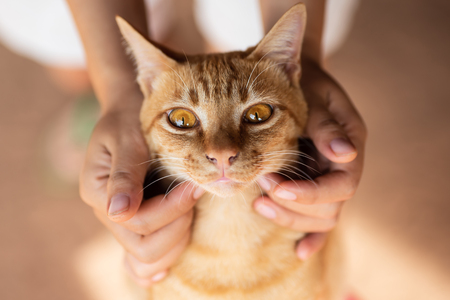
Thyroid hormones are essential to the body. They are involved particularly in the development and growth, the functioning of the nervous system or the regulation of heart rate and blood pressure…
disorders of the thyroid gland may occur. The latter can, for example, begin to manufacture thyroid hormones excessively : this is called hyperthyroidism.
This condition is relatively common in cats, we decided to treat, in this article, Feline hyperthyroidism.
The causes of feline hyperthyroidism
This disruption is, most frequently, related to hyperplasia (abnormal increase in size) non tumor of the thyroid or a benign tumor of the thyroid gland (this is known as thyroid adenoma).
less frequently, malignant tumors can develop (this is called adenocarcinoma).
Finally, in some rarer cases, a thyroid gland called "ectopic" (that is to say, abnormal location) located at the thoracic level and not at the neck, will go awry and cause hyperthyroidism. This is important because the therapeutic management of this type of hyperthyroidism should be adapted to the particular case (see below).
These various types of anomalies will have the effect of excess thyroid hormone production which will generate different symptoms.
Symptoms & rsquo; feline hyperthyroidism
These are usually the rather older cats (> 8-10 years) suffering from & rsquo; hyperthyroidism. It should nevertheless not formally rule out the disease in younger cats if clinical signs match.
Thyroid hormones have a variety of roles within the & rsquo; body, clinical signs are many and varied.
However, we must remember that often causes hyperthyroidism high blood pressure and that this pressure can itself generate a large number of complications at various levels :
- Ocular : sudden loss of vision, hematoma in the eye…
- Renal : lesion of the renal filter and occurrence of a renal dysfunction called Renal Insufficiency
- cardiac : the heart muscle is “inflate” (is called hypertrophic cardiomyopathy) facilitating the formation of blood clots, the occurrence of heart rhythm disorders and the development of heart failure
- Cerebral : can cerebral hypertension or onset of stroke (Stroke)
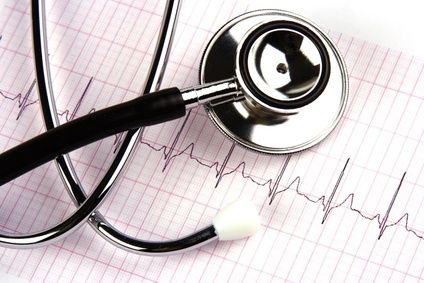
The symptoms arising from high blood pressure and other symptoms present during hyperthyroidism met at a greater or lesser frequency.
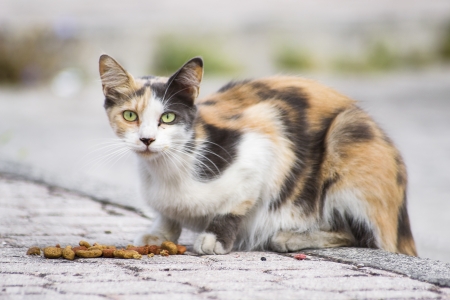
The most common symptoms are
- Polyuro-polydipsie (increase in the volume of the emitted urine, and the beverage outlet)
- Sometimes increased appetite (polyphagie)
- emaciation
- chronic digestive disorders (vomiting or chronic diarrhea)
- Bad skin condition (hair bitten, wads of hair…)
Less common symptoms
- difficult appetite (often linked to kidney failure complication)
- Behaviour change (Search fresh areas, irritability, aggressiveness,…)
- sudden blindness (loss of sight)
- Syncope (linked to heart complications)
- neurological disorders (hypovigilance, loss of equilibrium, sudden paralysis of hind limbs or limb before,…)
- respiratory symptoms : sudden trouble (during pulmonary thromboembolism : one or more pulmonary arteries are blocked, usually because of a blood clot)
How to diagnose hyperthyroidism ?
The diagnostic approach should be done in two, or three steps.
Confirm Feline Hyperthyroidism
When clinical suspicion of hyperthyroidism, the veterinarian will start by performing a blood test to make a dosage of thyroid hormones.
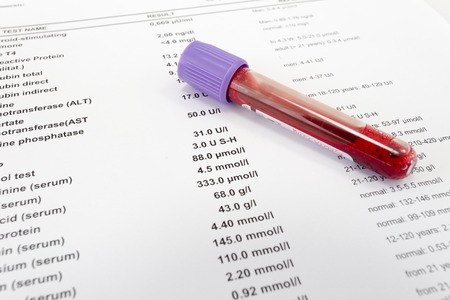
Search for any complications encountered in hyperthyroidism
Once the diagnosis, potential complications may be sought to support them or prevent, and to better adjust the therapeutic management.
For this, it is recommended to measure blood pressure, assess potential cardiac effects by echocardiography, and for renal dysfunction by urinalysis and blood.
Further investigations will be considered based on clinical signs encountered (brain imaging by CT or MRI, abdominal ultrasound, Chest radiographs ...).
Eventually, locate the site of hyperthyroidism and know the histology
When surgical treatment is contemplated, it may be necessary to know precisely where the tumor is located / thyroid hyperplasia or if there is an ectopic thyroid tumor (in the chest) : Indeed, the veterinarian must know where to operate. For this, combined imaging examinations (scanner + scintigraphy) recommended.
Treatment of Hyperthyroidism
Treatment should help manage, at a time, hyperthyroidism and its complications.
First-line medical treatment of hyperthyroidism is set up.
Several drugs exist, tablets or liquid to swallow.
The treatment is daily. It inhibits the production of thyroid hormone excess : it has no role in the cause "stricto sensu" (ie it does not destroy the tumor or hyperplasia). If the drug treatment is chosen as a treatment option for the long term, it will then be held for life.
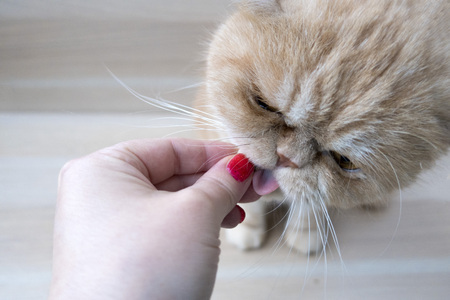
Your veterinarian will regularly check your pet to see if the drug used is effective, adjust the dosage administered if necessary and monitor for possible side effects. Thus, renal function and blood pressure should be monitored regularly and anomalies highlighted supported if needed.
Second line several treatment options are available to provide treatment over the long term :
- Maintain medical treatment for life
- Consider a final treatment from iodothérapie : the principle is to administer radioactive iodine to completely destroy the thyroid tumor
- Consider surgical definitive treatment : surgery allows removal of the thyroid tumor.
The last two options require a specialized team with a technical platform and a suitable structure.
Monitoring and Prediction
The reference treatment remains, so far, iodothérapie but the limited access to adequate facilities and the high cost of treatment makes this care much less common.
Medical treatment, once implemented, must be maintained for life.
Whatever the treatment decision, a close monitoring of the animal on the clinical and laboratory (blood tests and analyzes of regular urine, measurement of blood pressure…) is essential in order, including, to adjust the dosages of drugs.
The prognosis of hyperthyroidism depends largely on the presence or absence of complications.
§
Hyperthyroidism is a relatively common disease but sometimes difficult to detect due to the variability of symptoms it can generate and their appearance sometimes very gradually.
Do not hesitate to discuss with your vet any changes in behavior of your elderly cat (binge drinking or urination, excitability, increased appetite…), or disorder, even if it seems no obvious gravity from (progressive weight loss, diarrhea or chronic vomiting, hair in less good condition…).
If hyperthyroidism is diagnosed, you can reflect with him to the therapeutic choices more adapted to the specific case of your cat (age, character, presence of concomitant diseases or complications of hyperthyroidism…) and the advantages and disadvantages of each treatment options.
Author : Dr. Jérôme Séguela – Illustrator : Dr. Caroline Allard – Vetup®
